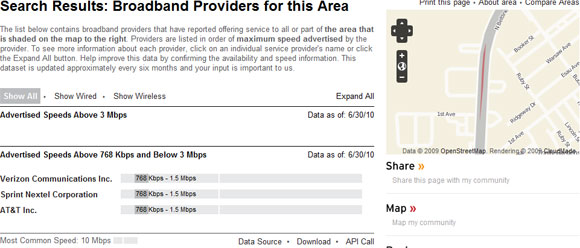Over the weekend, Broadband Reports broke the story that after plenty of talk about it, AT&T is implementing broadband caps and overage fees. The caps are 150GB per month for DSL and 250GB per month for U-verse. AT&T claims that it’s trying to be flexible, and the cap isn’t quite a “hard cap.” That is, subscribers will only be expected to pay overage fees if they go over the cap 3 times. But, if they do, the overage fees kick in, and it’s $10 per 50 additional GB. AT&T had tested similar caps in the past, but the decision to implement these on a wider scale is pretty much the company publicly admitting that there isn’t enough competition in the market, so it can put in place these kinds of limitations.
Let’s forget for a moment that between my (and my wife’s) podcast downloading, video streaming, YouTube, Xbox Live, Skype and general day to day usage you just made it unfeasible to pay that $8 a month for Netflix as I’d go right over that cap in next to no time.
Lets forget all of that because what I want explained to me is this:
I have a whole bunch of websites and some of them are on shared hosts. Even the ones on shared hosts use a lot of bandwidth.
One site, which is hosted with Bluehost, uses an an average of about half a TERABYTE of bandwidth a month for the paltry sum of $6.99 a month.
Think about it: 500 Gigs of bandwidth (actual usage), plus website hosting for $6.99 a month and you’re looking to charge $10 for 50 Gigs on top of what you charge monthly?
I know that web hosts are in the business of making money too. I know they have to pay for their servers and data centers. They also have to pay for bandwidth. Yet while my usage may be quite high, web hosts offering unlimited bandwidth are the norm.
I wonder how they can manage it? I know that most sites probably don’t have as high bandwidth consumption as the example above. A number of my sites get by in the 20 to 70 Gig per month range and I would consider those to be the “average” account seen by web hosts. Still, it just doesn’t add up.
Unlimited bandwidth, massive storage, server resources, all for $6.99 a month. AT&T want $10 for 50 Gigs after you’ve already payed through the nose for a measly 150 Gigs.
I think I know what the answer is.
It’s competition, or rather the complete and utter lack of competition.
The move may be positioned as helping AT&T deliver “a great experience for all our Internet customers,” but it’s not clear that these actions are necessary to control congestion, and it raises questions about competition for broadband service as many areas still only have one DSL provider.
You see, in order to get my $6.99 a month web hosts have to compete on pricing and services with hundreds of other web hosts all over the country. Web hosts know that if they don’t deliver I will take my cash and go elsewhere.
Where am I going to go if I want to switch from AT&T? Well,according to the National Broadband Map, nowhere!

Competition drives lower prices. It compels providers to offer superior services at lower costs in order to ensure that they get your hard earned money instead of their competitors.
The sad fact is that, for most people despite what companies like AT&T would like you to believe, there is no real competition.
Most people don’t have a choice of providers.
Those people who do have a choice (and I’m not talking about resellers here, who I suspect will be subject to the caps) tend to find that there is little to distinguish between providers who are all using the same excuses to charge exorbitant prices for frankly, piss poor services.
Without proper competition there is no incentive to build out the network. Actually, with no real competition the incentive becomes to create false scarcity and charge people multiple times for the same bandwidth they are currently using.
Unfortunately I don’t see any real competition coming anytime soon. It’s a very expensive game to get into delivering broadband on the national level and that takes some very deep pockets. Deep enough to discourage most from even trying to play.
Unbundling, in a similar fashion to the UK’s model for Local Loop Unbundling would create massive competition and drive down prices but, as always, the corporate lobbying machine won’t allow that to happen.
So I ask you AT&T: Why are you making it unfeasible for me to pay for new services such as Netflix? Why are you stiffing innovation? Why are you charging so much more than web hosts for considerably less bandwidth?
Why are you degrading your service for everyone instead of building it out? Why aren’t you building your network, improving speeds, offering better cheaper services and trying to draw in more customers, instead of raping the ones that you currently have?